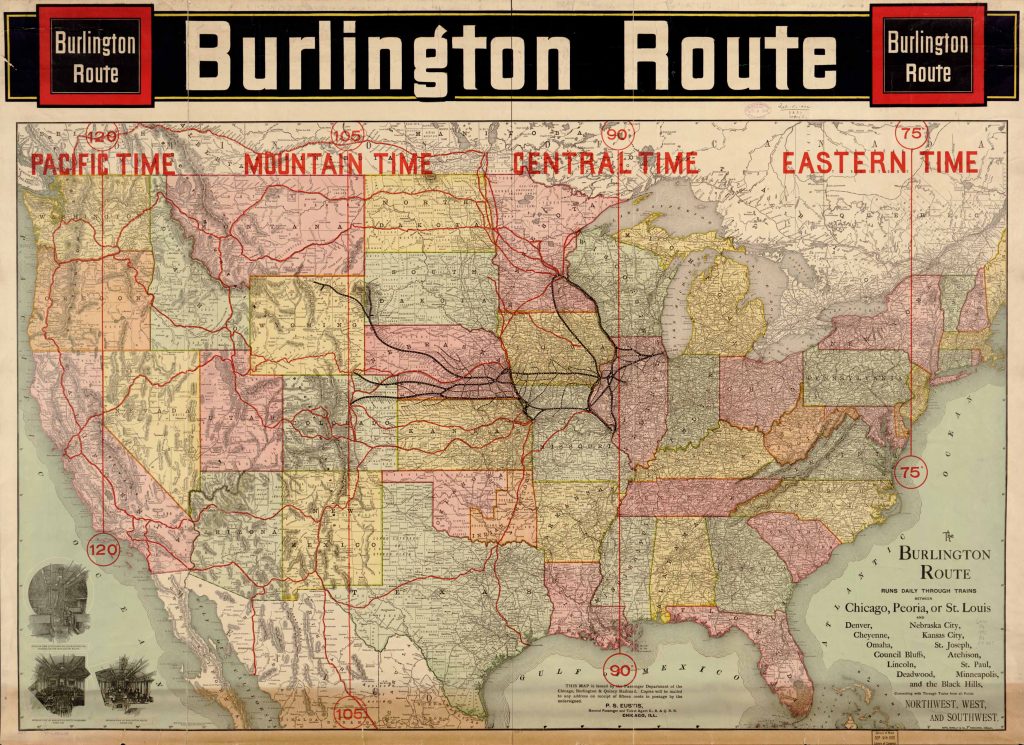Alexandria, VA — Freight railroads have a long and storied history in North America, beginning with the driving of the Golden Spike in Promontory Summit, Utah in 1869. From steam locomotives to today’s green “Gensets,” from only 2,000 track miles to the modern 140,000-mile network, freight railroads have evolved significantly over the last 147 years, growing and changing to meet the demands of a nation.
It was in the course of meeting these demands — keeping up with the busy pace of a burgeoning U.S. economy in the late 19th century — that railroads pioneered the first U.S. time zones on this day in 1883. During that time, some 80 different time standards were in place across the country, making it difficult to accurately schedule the movement of passengers and freight across the large network.
Even as late as the 1880s, most towns in the U.S. had their own local time, generally based on “high noon,” or the time when the sun was at its highest point in the sky. As railroads began to shrink the travel time between cities from days or months to mere hours, however, these local times became a scheduling nightmare. Railroad timetables in major cities listed dozens of different arrival and departure times for the same train, each linked to a different local time zone.
Recognizing the demand for a more reliable scheduling system, the major railroad companies at the time, along with the original American Railway Association, agreed to divide North America into four time zones. They collectively launched this new time-keeping system on November 18, 1883 at high noon.

Because railroads were the economic backbone for much of the country, most Americans and Canadians readily accepted the new standards. Congress later adopted the railroad time zones as the official time code in the United States in 1918. Over 130 years later, the dividing lines we abide by today are very close to the original time zones initiated by the railroads.
Sources:
Railroads create the first time zones, www.history.com
U.S. Census Bureau Daily Feature for November 16: Time Zones, www.prnewswire.com
Railroads Create First Time Zones, www.aar.org


